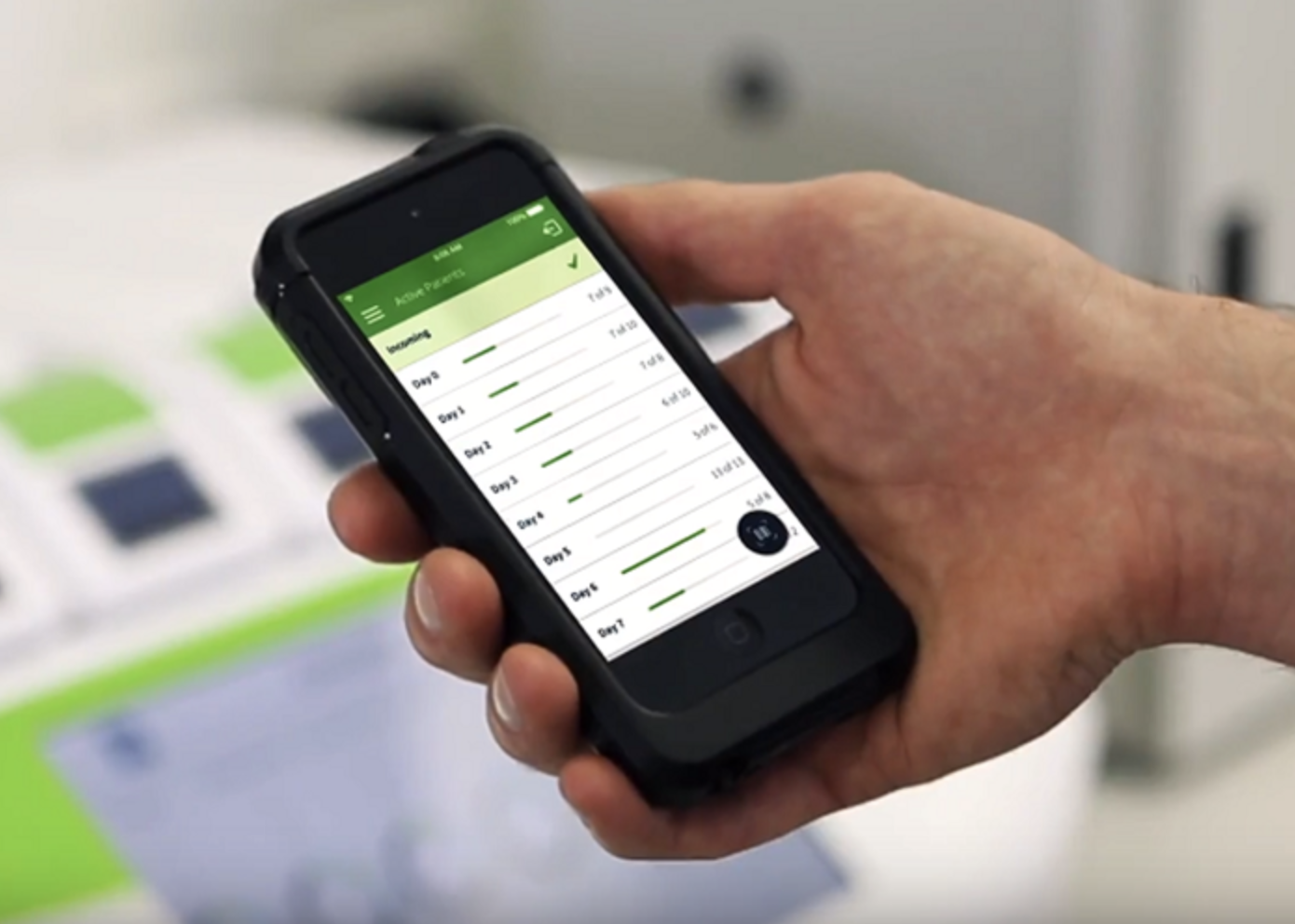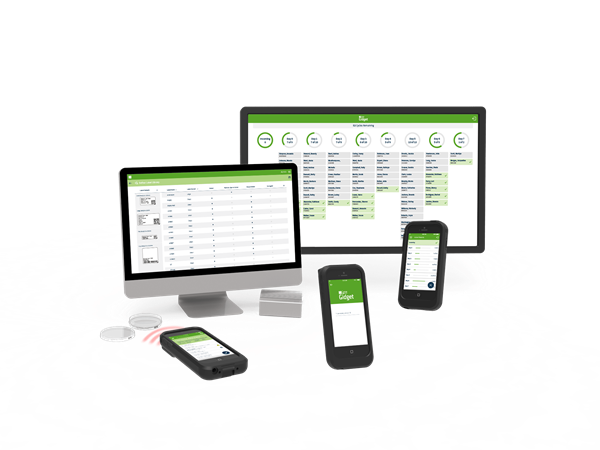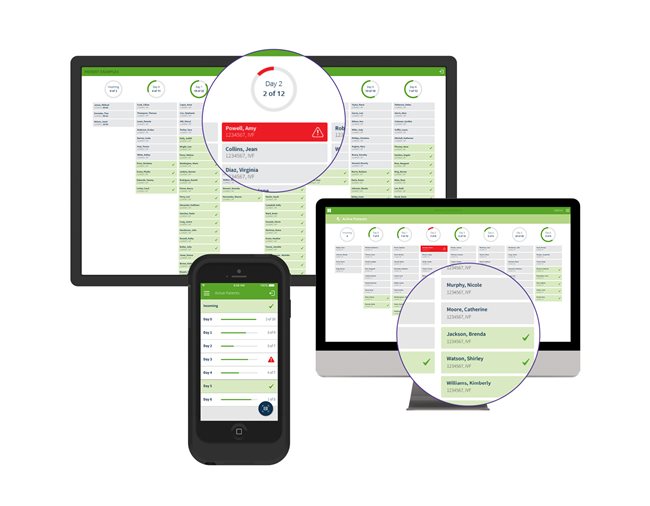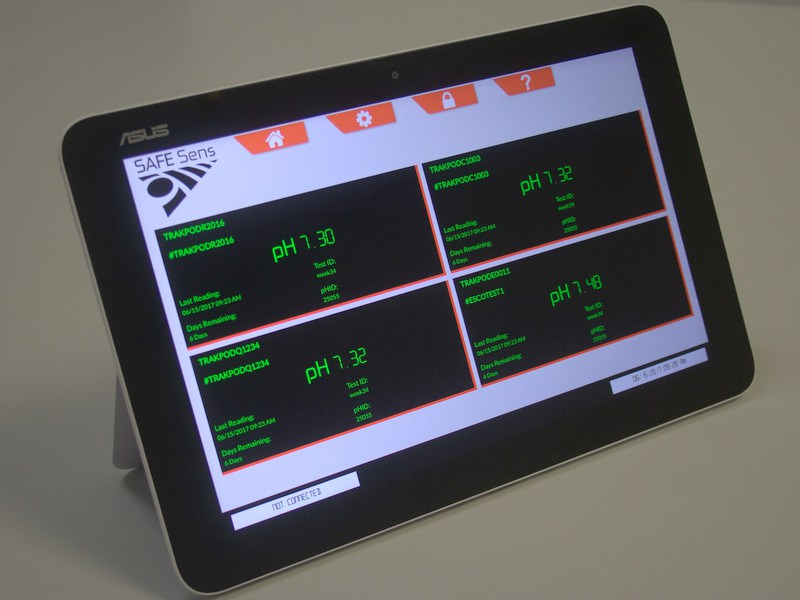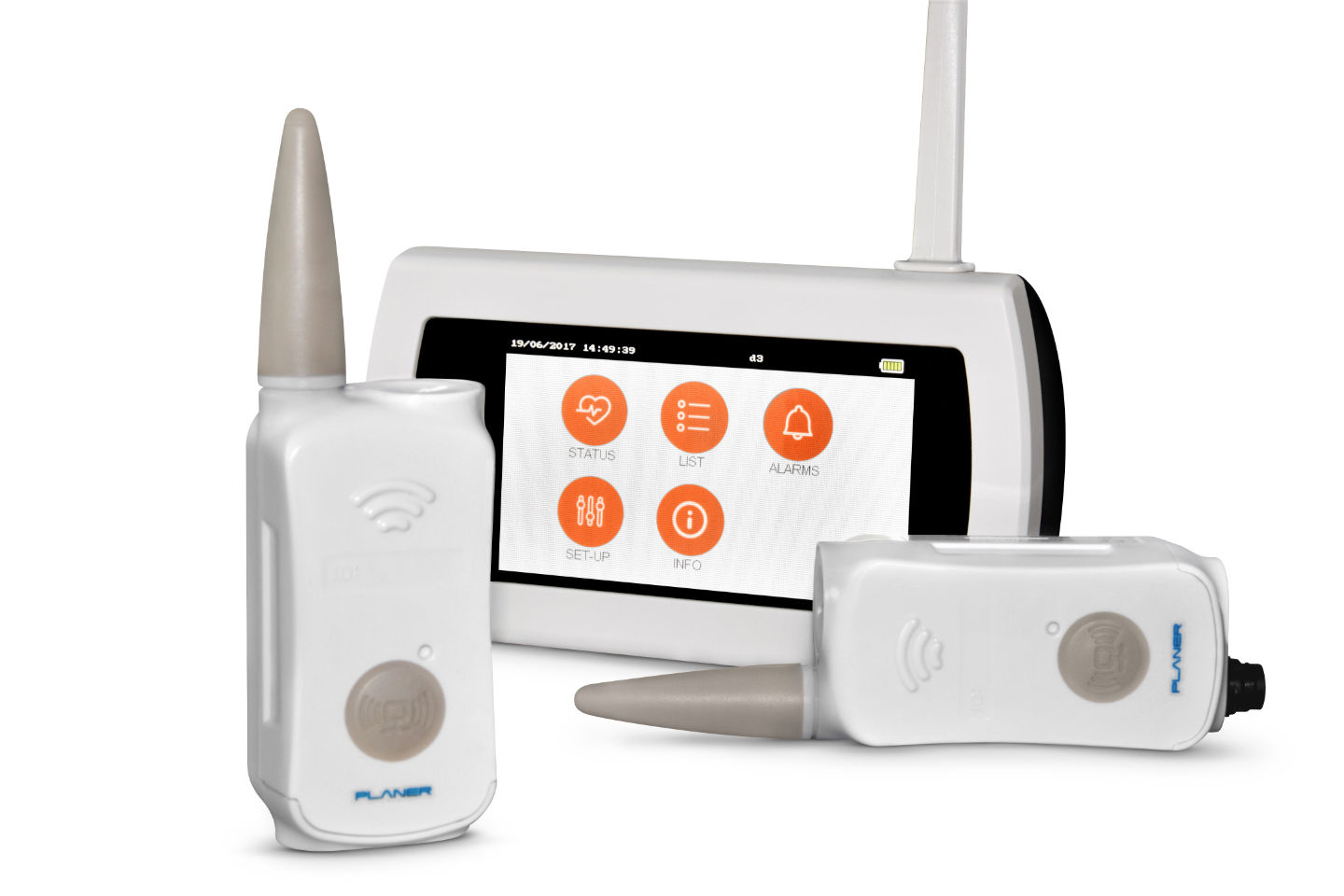
Gidget® Electronic Witnessing
Genea Biomedx
Gidget® is an easy to use hand-held device to aid sample identification and tracking during ART procedures, and to minimize the chance of human errors occurring. Not only is it an electronic witnessing system, it also provides a customizable workflow management system that is configurable to any clinical lab.
- Gidget® communicates via Wi-Fi (no internet connectivity is required)
- No modification to the lab hardware is needed
- Quick and easy to implement in current lab systems
- Modular approach that will enable integration of future functionalities
Double Witnessing
Double IVF witnessing is defined as identification of patients and traceability of their reproductive cells during each clinical and laboratory procedure which requires paperwork. IVF witnessing is the process of ensuring that embryos, gametes and patient samples are handled and mixed correctly.
- On average, embryologists manually double check identification of patients and their consumables for up to six movements per cycle. In some clinics, this amounts to almost 50,000 critical checks per year, that’s 50,000 chances of variable human error and 2,250 hours of productivity lost to witnessing interruptions.
- Although generally recognised as a very rare event in IVF there have been a few instances where biological sample mix-up has been reported. Despite standard operating procedures of many laboratories, including the manual witnessing approach, embryologists are exposed to increased mismatching risks during the manipulation of biological material.
- Electronic Witnessing Systems aim to further reduce the risk of error during biological samples handling and have been shown to reduce patient concerns. In addition, Electronic Witnessing Systems enables the electronic traceability of the staff members performing each procedure and the time it was performed, and increases the efficiency of the whole process.
How Gidget® works in the lab
Gidget® aids error prevention and enables a customised intelligent ART assistance for clinical workflow management and patient tracking
Available on any lab PC through the Gidget® Web App and also a dashboard available on a large wall mounted TV screen. Both the Gidget® Web App and the dashboard provide: Configurable process mapping1 by development day (until Day 7) supports processes are followed.
Workflow tracking based on workflow rules tailored to each lab. These rules assist the scientists as they go about their tasks, helping to prevent the omission of key tasks in the witnessing process.
- Days can be linked to procedures to support visibility of patient activities.
- Cryo-sample linking; allows new cycles to be linked to previously frozen cycles from the same patient.
- Single role cycles (such as sperm/oocyte donation): it is not mandatory to have a cycle with two patients linked to it.
- Different levels of permissions and types of users support quality control: Workflow rules are designed and implemented by lab managers. Critical error Patient Mismatch can only be unlocked by a supervisor.
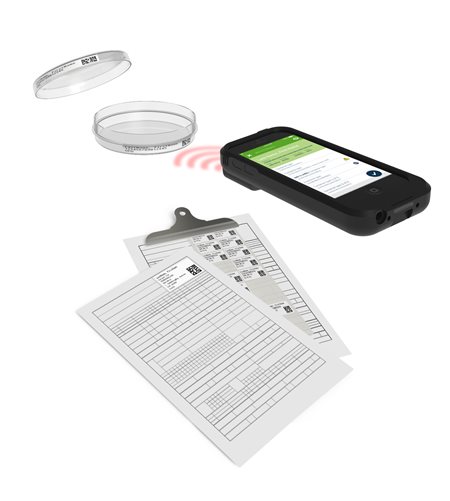
Gidget® barcode reader uses Image-based scanner technology
- Short-wavelength red laser that enhances visibility when scanning barcodes
- The laser in Gidget® aids the user to aim the reader for ease of scanning, however it can be turned off if such assistance is not required.
- Minimal time exposure in barcode scanning compared to other IVF procedures2.
- Complies with HFEA Code of Practice 2016 recommendations.
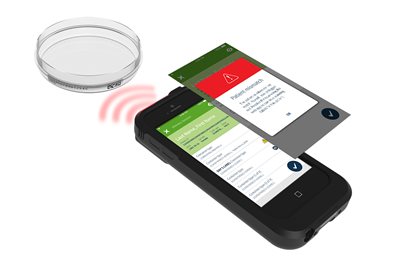
Ensuring high quality data is available to trace sample and audit results is a key requirement in the electronic witnessing environment.
- Gidget® provides each user with a unique barcode log-in to the handheld scanning system where witness events are logged and users log in to the Web App.
- Reports on Cycle History and Witnessing events are available for review and are exportable as a print ready pdf.
- These reports include error resolutions, procedure deviations and user scan history. All information associated with each individual scan is recorded including who resolved errors.
Get Instant Access
Enter your information below to view this resource.
"*" indicates required fields
Are you a Hamilton Thorne distributor?
Sign in to the distributor portal to gain access to all gated assets and exclusive content.
You may also be looking for
Case Studies
How other labs have utilized Hamilton Thorne solutions

New Mexico Cryobank and Andrology Lab (Roosters)

Zangersheide N. V. (Equine)

